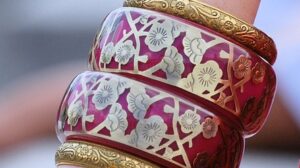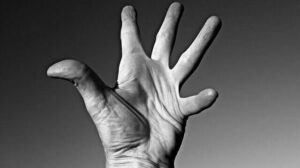What is Tendonitis Definition?
Tendinitis is an inflammation that occurs in tendons, which are tissues that connect muscles and bones. This condition can occur in tendons in any part of the body, although it is common in tendons in the shoulders, elbows, knees, ankles, or heels.
When you experience inflamed, the tendons will hurt when the muscles are moved, which can interfere with muscle movement. Tendinitis can last in the short term (acute) or long-term (chronic).
Tendinitis itself has different names in each area. For example, patellar tendinitis in the kneecap area (patellar tendon). These injuries are commonly experienced by volleyball and basketball athletes. In addition to patellar, there are also other terms such as tennis elbow, swimmer’s shoulder, or golfer’s elbow.
The tendon, a living organ in constant restructuring
Tendons attach muscles to bones and make it possible to transmit the force created by the muscular contraction to the skeleton, and thus to produce a movement.
They are made up of collagen glycoproteins and proteoglycans who form microfibrils. These microfibrils groups together to form fibers themselves assembled to form bundles (primary beams) and super bundles (secondary and tertiary beams). These bundles are aligned along the length of the tendon for greater strength.
Tendons contain approximately 70% water, which is essential for the regular structure of microfibrils, fibers and bundles. They are very poorly vascularized.
Like the skeleton, tendons are constantly being remodeled, new fibers replacing the old ones which disappear.
| The tendon, an organ of the sensation of movement |
|---|
| The tendon is surrounded by a membrane, the epitenon and is in a sheath (the paratenon) which protects it and produces a lubricating liquid which promotes the sliding of the tendon in the sheath. These membranes contain nerve receptors, which signal to the brain the tension of the tendon, but also the nature of the movement performed. Thus, they contribute to the perception of our body in space and to the maintenance of our posture and balance. |
The tendon, an organ that resistance increases with use
Due to its multi fibrous structure, a tendon is both tension-resistant and very elastic. In addition, a well-conducted sports training can increase its resistance and its elasticity.
Conversely, an unusual repeated effort on a poorly trained and poorly warmed up tendon weakens its structure, in particular at the level of the ends of the tendon as well as in the zone where the strongest tensions are exerted. Physical inactivity and age tend to weaken the tendons.
Tendinopathy, tendinitis or musculoskeletal disorders?
The common name of ” tendonitis is not completely correct. Indeed, except when the sheath of a tendon is inflamed, there is strictly speaking no inflammation. But the suffix “-itis” indicates the inflammation of an organ (as in ” hepatitis “, inflammation of the liver).
The term ” tendinopathy (“tendon disease”) is now preferred because microscopic examination of a painful tendon shows degeneration and not inflammation.
All parts of the tendon can be affected: the body of the tendon (tendinopathy proper) or the part connected to the bone (insertion tendinopathy or enthesopathy “). Sometimes it is the sheaths that surround the tendons, and in which they slide, that are affected. We then speak of ” tenosynovitis “.
The musculoskeletal problems (TMS), often mentioned in the context of occupational health, include both tendinopathies, but also muscle and joint disorders.
| The different types of tendinopathy |
|---|
Among the tendinopathies, we distinguish:
Only one ultrasound or an MRI distinguishes between these two types of tendinopathy. In daily clinical practice, it is hardly possible to tell the difference. |
Causes for tendonitis
Tendinitis is generally caused by repetitive movements, such as jumping movements that basketball athletes often make or swinging hands that tennis athletes often do. However, in certain cases, tendinitis can also occur due to injury due to lifting heavy weights.
Tendonitis Risk Factors
There are several conditions that can increase the risk of tendonitis, among others:
People with certain conditions such as diabetes, obesity, and rheumatoid arthritis.
- The use of some antibiotics.
- Age, ligament flexibility will be reduced as the age increases.
- Certain sports that require a lot of practice, such as basketball, golf, tennis, or swimming.
- Smo**king habits.
- Certain jobs, especially those involving repetitive movements.
Tendonitis Symptoms
The signs and symptoms of tendonitis are pain at various levels depending on the severity of the condition, and the swelling followed by redness in the area. You will also experience pain and weakness in the joints or muscles. In some cases, these symptoms will disappear after a few days. But in more severe cases, the pain can feel very excruciating. If these symptoms do not go away and even get worse, you should consult a doctor for treatment.
Complications can occur if left untreated. Mild conditions can be bad. If this happens, you will be advised to have surgery to repair the tendon.
Tendonitis Diagnosis
To determine a person has tendinitis, the doctor will conduct anamnesis or medical interview and physical examination. An examination is performed in the area of the tendon that is experiencing pain.
Sometimes radiology examinations can be required, such as X-rays, CT scans, or MRIs. The examination is carried out depending on the tendon area and the suspected disease experienced.
Treatment For Tendonitis
Home remedies for tendonitis
Tendinitis treatment aims to relieve pain and inflammation. The things that need to be done are:
- Rest the inflammatory tendon area
- Compress the affected part with a cold compress to reduce pain
- Taking painrelievers, such as paracetamol and ibuprofen
- Bandage muscle and joint areas that have tendinitis
If by doing these things, the complaint has not improved, the doctor can give steroid injections (anti-inflammatory drugs) to the part of the body that has tendinitis. Sometimes physiotherapy is also needed.
Read also:
How To Cure Achilles Tendonitis
Medical treatment for tendonitis
There are several types of treatments to choose from, including:
Use of drugs
To overcome tendinitis, the most commonly used medications are painrelievers, such as aspirin, naproxen, or ibuprofen that can help reduce discomfort.
There are also topical medications in the form of anti-inflammatory creams that can be used to overcome tendonitis. In fact, this drug has milder side effects than oral painrelievers.
Then, there are also corticosteroids that doctors usually give by injecting around the tendon to overcome tendonitis. This drug can reduce inflammation while relieving pain.
However, corticosteroids are not recommended to overcome persistent tendonitis and have been attacking tendons for more than three months.
Physical therapy
In addition to the use of the drug, you can also follow the physical therapy suggested by the doctor. This activity can be done based on the needs of the body, so the physical exercises provided are generally programmed specifically for you.
You may be asked to stretch to overcome painful muscles and tendons. Stretching proved to be one of the alternative treatments that effectively address chronic tendon problems. In fact, stretching is often the first choice of treatment for tendinitis.
Surgical procedure
In certain situations, physical therapy and drug use turned out to be insufficient to overcome tendonitis. In fact, such treatment may not relieve the symptoms at all.
Therefore, there are times when you have to undergo surgery to overcome the condition you are experiencing. The type of surgery performed is also determined based on the severity of tendinitis.
How to prevent tendonitis / tendinopathy?
Prevention of tendinopathies (tendonitis) goes through simple gestures and the acquisition of good technique.
Take lessons for better technical gestures
When you start practicing a new sport, it is essential to take advice and take courses to fully master the technical aspects. An instructor or coach teaches his students the right gestures and correct postures. It also guides them in choosing suitable equipment.
Drink regularly to prevent dehydration
During exercise, the body needs water to compensate for losses related to perspiration, respiration and energy production. Insufficient hydration before, during and after exercise can have many consequences, mild or serious: tendinopathies, but also cramps, discomfort, heat stroke, etc.
After exercise, stretching
A sports session must be completed by a stretching session characterized by contraction, relaxation and stretching exercises. In addition to helping to calm down, stretching after sport helps prevent tendon and muscle problems.
Take regular breaks
Whatever activity you practice (sport, gardening, DIY, etc.), intersperse regular breaks with an activity that involves repeated movements.
Other ways:
- Before exercise, a warm-up is essential.
- Equipt Yourself Correctly
Read also:
How To Cure Golfer’s Elbow







